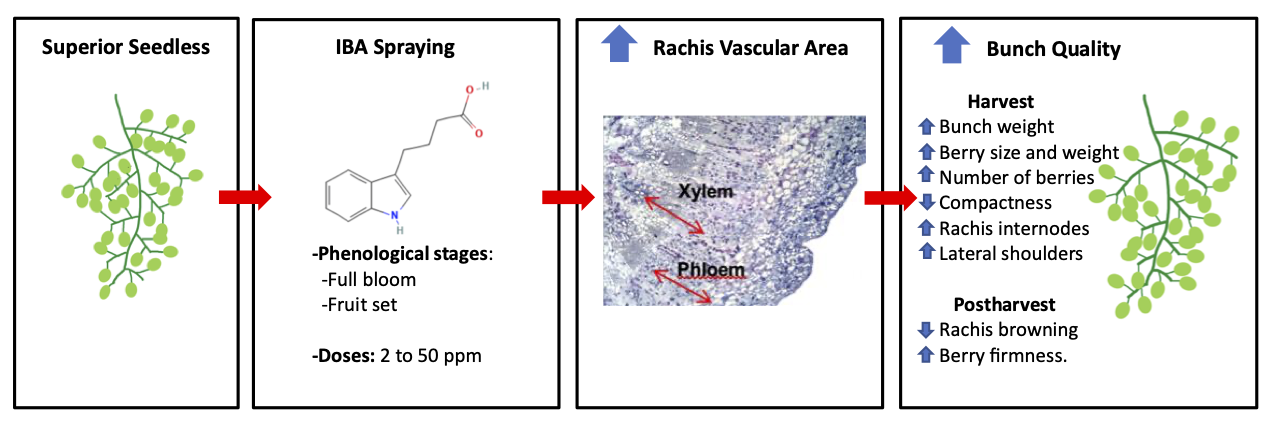Indole-3-butyric acid, an alternative to GA3 for bunch quality enhancing of table grape Vitis vinifera L. cv. Superior Seedless
DOI:
https://doi.org/10.48162/rev.39.075Palabras clave:
auxina, giberelinas, hormonas vegetales, arquitectura de racimos, uva de mesa sin semillaResumen
Gibberellic acid (GA3) is the most widely used plant growth regulator to thin out bunches and increase berry size in seedless table grapes, but there is evidence of its negative effects, including loss of fertility and malformations of the rachis. This study analyses the effects of applying the auxin indole-3-butyric acid (IBA), as a novel alternative, on fruit yield, bunch structure, anatomy and postharvest quality of cv. Superior Seedless. The application of IBA and GA3 at different phenological stages (15 cm shoot length, full bloom, fruit set and pea-size berry) and doses (2, 20 and 50 ppm) were compared in a two-growing season experiment. Spraying IBA at full bloom or fruit set, improved bunch weight by increasing the size and weight of the berries, correlating with the promotion of rachis vascular tissues. Bunches treated with IBA retained a greater number of berries at harvest without generating compactness, since the elongation of the rachis internodes and lateral shoulders were also promoted. In addition, IBA augmented postharvest quality of bunches by reducing rachis browning and increasing berry firmness. These results suggest that the use of IBA is a beneficial technology to improve bunch structure and quality in seedless grapes.
Highlights
- IBA effects applied at different dosages and phenological stages was evaluated.
- IBA at full bloom and fruit set improved bunch and berry weight and berry size.
- The number of berries per bunch increased with IBA at full bloom and fruit set.
- IBA increased lateral rachis internode and lateral rachis length via promotion of vascular tissues.
- IBA increased postharvest quality, reduced rachis browning and increased of berry firmness.
Descargas

Descargas
Publicado
Cómo citar
Número
Sección
Licencia
Derechos de autor 2022 Revista de la Facultad de Ciencias Agrarias UNCuyo

Esta obra está bajo una licencia internacional Creative Commons Reconocimiento-NoComercial-CompartirIgual 3.0.
Aquellos autores/as que tengan publicaciones con esta revista, aceptan las Políticas Editoriales.










.jpg)




